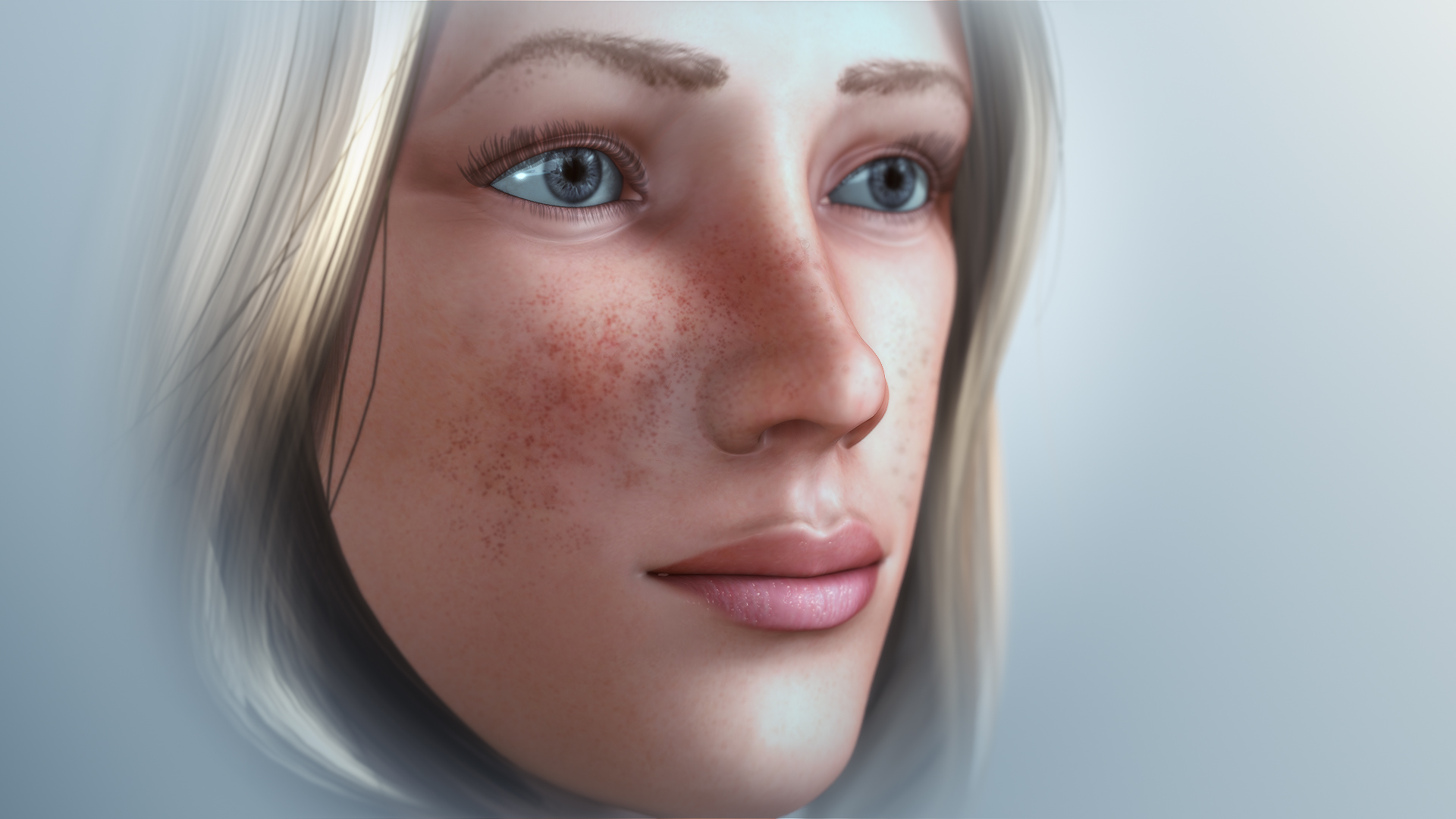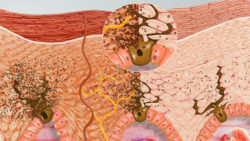
Freckles appear as clusters of circular, brownish-colored spots, more prominently on the faces of light-skinned people. They occur as a result of increased melanin production.
Freckles are predominantly found on the face, although they may appear on any part of skin that is exposed to the sun (arms, shoulders, etc). Infants rarely have freckles; they are common in children who are close to attaining puberty.
Types
Ephelides are tiny, flat, tan-colored spots that typically appear during the sunny months. Although found on people with a variety of skin tones, they are most visible in light-skinned people. People with reddish hair and green eyes are more prone to these types of freckles. The regular use of sunblock can inhibit their development.
Lentigines are larger, isolated pigmented spots most commonly present at the site of previous sunburn and sun damage. They are also called liver spots or sun spots, and look darker as they form after years of sun exposure. Liver spots are not seasonal like ephelides, and are found more commonly on older people. Occasionally lentigines are part of a certain rare genetic syndrome.
Cause (Biology)
Freckles develop due to sun exposure in people who are genetically predisposed.
In order to absorb harmful UV-B rays, an ultraviolet component of sunlight, specialized cells in the skin surface, called melanocytes, step-up production of melanin pigment,
People with blond or red hair, light-colored eyes, and fair skin are likely to have alleles of the MC1R gene, that increases their susceptibility to damaging UV rays and, are hence, more prone of developing freckles.
A freckle is different from a mole that forms as a result of accumulation of melanocytes in a small area.
Treatment
Since freckle prevention is effective (and easier) than freckle removal, treatment is rarely needed.
Treatments are usually safe but expensive methods to lighten the spots. Often there is a need for a combination of treatments to obtain desirable results. Also, the same treatment may not work for every skin type, and freckles may recur with repeated UV exposures. Some ways in which freckles can be reduced are:
- Consistent application of bleaching creams, containing hydroquinone and kojic acid, helps lighten freckles over a period of months. They work best in combination with sun protection.
- Retinoids such as tretinoin, tazarotene, and adapalene may be used in conjunction with other bleaching creams.
- A light cryosurgery with liquid nitrogen is effective against some types of freckles; not all spots respond to it.
- Several types of lasers also have a high success rate in treating freckles. Photofacials or Intense Pulsed Light treatments, which is not a true laser technique, are another method.
- Chemical peels can also help lighten freckles and improve irregular pigmentation.
Freckles is not a skin disorder, and is not harmful just by itself; but since affected people lack the optimum quantity of pho-protective melanin, they may be more susceptible to the harmful effects of UV.

The Chemistry of Skin Tanning
The sun, water, air - the elements - are double-edged swords for humans. In moderation, they sustain planetary life. But they can also be dangerous. The human body’s machinery harvests the elements to produce nutrients or run internal processes. Read More..

Pimples
A pimple also known as a zit or spot is formed when the oil gets trapped in the skin pores. Read More..









